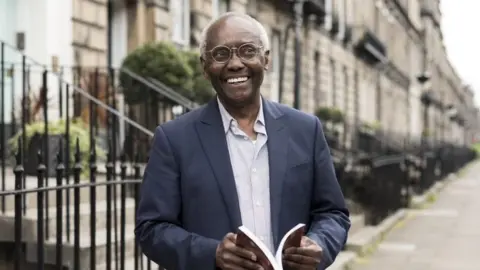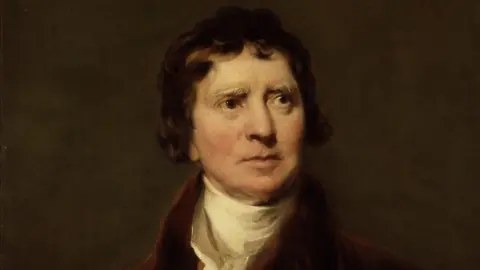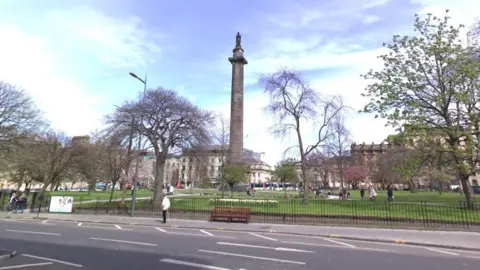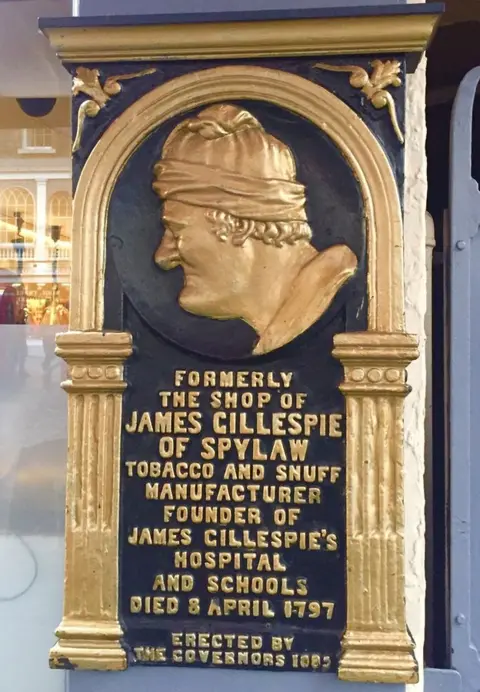Charting Edinburgh's slave trade history
 Alicia Bruce
Alicia BruceAs Black History Month comes to a close a prominent Edinburgh professor is calling for the city to greater acknowledge its connection to the slave trade.
Sir Geoff Palmer said it was time accept that some of Scotland's most notable citizens owned and exploited tens of thousands of people.
"Being honest about how Scotland benefited from the slave trade is a crucial step on our journey to becoming a fair and inclusive society," Sir Geoff said.
"While there has been much discussion in recent years about Glasgow's role in this terrible trade, we need to acknowledge that many of Edinburgh's most notable citizens owned and exploited tens of thousands of enslaved people."
'Heavy price'
The Professor Emeritus at Heriot-Watt University believes that as a nation, Scotland benefited disproportionately from the slave trade.
Drawing from research from the Centre for the Study of the Legacies of British Slave Ownership, Sir Geoff also argued that the economic transformation experienced by Edinburgh towards the end of the 18th Century came at a heavy price.
He believes that relative to population, Scots owned more slaves, more plantations and had a higher share of the transatlantic trade in plantation goods such as tobacco and sugar than England or most other European countries.
By 1817, 32% of Jamaican plantations were owned by Scots.
 National Portrait Gallery London
National Portrait Gallery LondonSir Geoff added: "Our glorious New Town, seen by many as the physical embodiment of the Scottish Enlightenment, was, sadly, partly funded by the enormous profits derived from the enslavement of Africans.
"Many wealthy residents were handsomely compensated by the British government for the loss of their slaves, described as 'property', in the years following the abolition of slavery in 1833."

Edinburgh's slavery history
James Lindsay, 7th Earl of Balcarres, was one New Town resident who received a large compensation payment from the British government.
Henry Dundas, honoured by one of Edinburgh's most prominent landmarks, the Melville Monument in St Andrew Square, is another notable character who opposed abolition.
Dundas, the 1st Viscount Melville, was the MP for Midlothian and as a member of the cabinet, delayed abolition for 15 years in the 18th Century.
The British government paid 3,000 slaveholders £20m in compensation for the emancipation of slaves in 1833, the equivalent of around £17bn today.
 Google
GoogleOne of the biggest compensation payments went to Peter McClagan of Great King Street who, received £21,480 for the "407 enslaved" at a plantation in British Guiana, about £1.7m in today's money.
John Blackburn, a slave owner and Queen Street resident, submitted three claims for 638 slaves in Jamaica.
William Alexander, Lord Provost of Edinburgh in 1753, owned four ships which often returned from colonies with rum, muscovado sugar, rice and mahogany.
Tobacco from from the Americas arrived from slave plantations into Leith in the 17th Century.
James Gillespie owned a shop at 231 High Street and made his fortune selling Virginia tobacco and snuff. Money from his fortune was left to build a school in Marchmont that still bears his name.
The school later went on to inspire Muriel Spark's novel - The Prime of Miss Jean Brodie.

The Countess of Stair was reported to have the first black servant in Edinburgh, she lived in what is now the Writers' Museum.
Slavery also touched one of Edinburgh University's most famous students, Charles Darwin was taught by a freed black slave.
John Edmonstone, a neighbour to Darwin on Lothian Street, came to Scotland from South America with his former master and taught taxidermy at the university.
Although there is little evidence of female involvement in the abolition movement, Quaker Eliza Wigham, of South Gray Street, has been hailed as a key women in the "transatlantic anti-slavery sisterhood".
The Wigham's were one of a network of anti-slavery Quaker families operating throughout the British Isles. Eliza was also involved in several movements to improve women's right in the 19th Century.
Black history month has ran for the entirety of October, highlighting important people and events in the history of the African diaspora.
